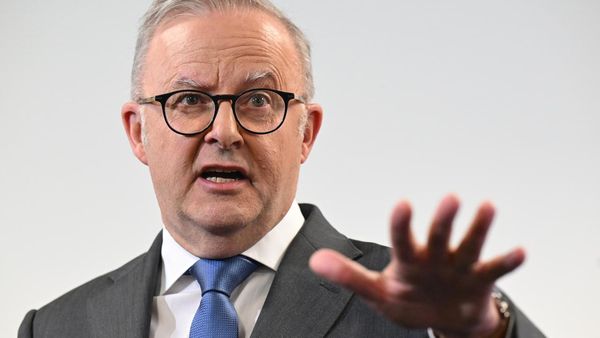
Business & investing: NZ economists warn better-than-expected GDP data likely to be temporary, and US Federal Reserve held its benchmark interest rate steady for a second time
News that the NZ economy hasn’t been in recession after all – albeit a technical one – delivered a welcome surprise, particularly for a Government under pressure in the countdown to next month’s election, though the Reserve Bank may be less enthusiastic about the result.
GDP for the second quarter rebounded 0.9 percent, much stronger than economists had forecast (consensus was for a lift of 0.4 percent), as the economy bounced back from the impact of severe flooding and other weather-related events earlier in the year.
Business services generated the largest contribution to growth, accompanied by a lift in manufacturing output (after five quarters of decline). In a nutshell, economic activity was simply much stronger than expected.
However, the weakness in the report came from the all-important primary industries sector. Agriculture, fishing and forestry, all fell by more than two percent. Other declines were seen in retail trade as consumers spent less on furniture, electrical and hardware retailing.
Durable goods spending lifted somewhat, an area of weakness in prior quarters – no doubt attributable to 140,000 new migrants entering the economy and getting themselves established in their new homes – but overall spending from households, though a little stronger than forecast, remains weak.
Kiwibank chief economist Jarrod Kerr was quick to point out the latest numbers were “old data” and the economy had simply bounced off what were already very low levels of economic activity in the wake of the flooding and cyclone.
“We continue to expect weak economic activity over the second half of this year, and into 2024. The latest GDP report does little to change our view on the path for monetary policy.”
In fact, Kerr believes the full impact of the Reserve Bank’s current tightening is only in its early stages.
“To understand the underlying trend, it’s better to look at annual comparisons. And compared with the June 2022 quarter, economic growth slowed to 1.8 percent. That’s stronger than our estimate of 1.3 percent, but weaker than the previous 2.2 percent print. We expect this slowdown to continue.”
Though unemployment remains low and continues to cushion the economy, it has the potential to be a significant turning point if business confidence continues to decline.
“What hasn’t changed is the RBNZ’s heavy hand – 525 basis points of interest rate hikes in a very short space of time are still being felt. Many households have yet to be hit by much higher interest rates so the brunt of the slowdown is yet to come.”
ANZ Bank chief economist Sharon Zollner said the latest GDP data was unlikely to have much of an impact on the Reserve Bank’s next Monetary Policy Review in 10 days’ time when a pause is widely expected, though Zollner was expecting the October statement to have a “hawkish tilt” with a rate hike now looking increasingly likely in November.
“After accounting for the Q2 starting point, our medium-term GDP outlook is little changed from that presented in our August Quarterly Economic Outlook. The economy is expected to continue its post-pandemic normalisation, with services exports (chiefly international tourism and education) continuing to recover. Meanwhile, domestic demand is expected to remain soft as restrictive monetary conditions weigh.”
The annual current account deficit also narrowed more than expected in the second quarter to 7.5 percent of GDP, helped by some historical revisions, though the external accounts continue to remain severely out of balance.
The NZ sharemarket ended the week with a small gain of 0.33 percent because of a late index-related buying surge after spending most of the week deeply in the red, and across the Tasman, Australia’s ASX200 index fell by nearly 3 percent for the week.
US Federal Reserve rattles markets with hawkish statement
In what could be a mirror of the outlook facing the Reserve Bank, the US Federal Reserve held its benchmark interest rate steady for a second time, and also indicated it still expected to hike one more time before the end of the year and was forecasting fewer cuts next year than previously indicated.
That final increase, if it goes ahead, is expected to be the last in this cycle, according to projections the central bank released at the end of its two-day meeting. If the Fed does decide to proceed with the move, it would make a full dozen hikes since the policy tightening began in March 2022.
Though no hike was expected at last week’s meeting, there remains considerable uncertainty over the future pathway for interest rates in the US. Judging from documents released, the bias appeared weighted toward more restrictive policy and a higher-for-longer approach to interest rates.
That outlook saw US equity markets experience their sharpest sell-off in almost six months with the S&P500 index slumping almost 3 percent for the week and now down 4 percent for the month – its worst month this year.
Markets had been expecting the Fed to outline a more neutral pathway, and the statement’s more hawkish tone caught traders by surprise.
“We’re in a position to proceed carefully in determining the extent of additional policy firming,” Fed chair Jay Powell said in a media conference.
However, he also added that the central bank would like to see more progress in its fight against inflation.
“We want to see convincing evidence really that we have reached the appropriate level. We’re seeing progress and we welcome that, but we need to see more progress before we’ll be willing to reach that conclusion,” Powell said.
Projections released in the Fed’s dot plot showed the likelihood of one more increase this year, then two cuts in 2024, two fewer than were indicated during the last update in June. That would put the funds rate around 5.1 percent. The plot allows members to indicate anonymously where they think rates are headed.
“Chair Powell and the Fed sent an unambiguously hawkish ‘higher-for-longer’ message at today’s FOMC meeting,” wrote Citigroup economist Andrew Hollenhorst. “The Fed is projecting inflation to steadily cool, while the labour market remains historically tight. But, in our view, a sustained imbalance in the labour market is more likely to keep inflation ‘stuck’ above target.”
The Fed’s more hawkish tone also pushed the US 10-year Treasury yield as high at 4.5 percent at one point sending equities tumbling as a result.
Also clouding the Fed’s outlook is the potential for a full-blown government shutdown this coming weekend as lawmakers look increasingly unlikely to strike a budget deal in the face of hardline opposition from the right wing of the Republican party.
Legislators have just one week left to come up with a spending plan that can make it through both chambers of Congress — no easy feat given Republicans control the House of Representatives by a slim majority and Democrats hold the Senate by a similarly razor-thin margin.
If there is no agreement by midnight this Saturday, millions of federal workers in the US will begin to be furloughed, bringing all but “essential” operations of the government to a halt. There are growing concerns a protracted shutdown could have ripple effects across the US economy, denting business and consumer confidence when there are already fears a recession is looming.
The latest budget stand-off stems from a sharp divide within the Republican party over taxing and spending, including whether to sign off on a large additional aid package for Ukraine.
Continued strike action by the powerful United Auto Workers union entered its second week with little progress in striking a deal, though favourable negotiations by Ford with union members following an increased pay offer did result in the company not being subjected to a further escalation in strike action.
According to the Financial Times, filings show shareholders have received almost US$85 billion (NZ$143b) from Detroit’s big three auto makers through dividends and buybacks since the 2008 financial crisis when the sector received significant government financial aid.
Scandal-plagued Japanese electronics manufacturer set to delist in the coming months
Toshiba, one of Japan's oldest and most high-profile electronics manufacturers, is set to end its 74-year stock market history after the recent acquisition of a majority stake by a group of investors.
The company announced that a consortium led by private equity firm Japan Industrial Partners had purchased almost 80 percent of its shares allowing the group to complete a US$14b deal to take it private.
The company’s roots date back to 1875, as a maker of telegraph equipment and almost 75 years later in 1949 its shares began trading on the Tokyo Stock Exchange as Japan emerged from the ravages of World War II.
Its divisions range from home electronics to nuclear power stations, and for decades after the war it was a symbol of the country's economic recovery and its technology industry. In 1985 it launched what it described at the time as "the world's first mass-market laptop computer”.
More recently the company’s reputation has been tarnished by a series of widely publicised business scandals including admitting in 2015 it had overstated its profits by more than US$1b over six years which resulted in the company receiving a US$47m fine. In the same year, it was found to have colluded with the Japanese government to suppress the interests of foreign investors.
Two years later, it revealed major losses at its US nuclear power business, Westinghouse, and in order to avoid bankruptcy it sold its highly profitable memory chip business in 2018, which was seen as a crown-jewel in the company's portfolio.
Coming Up This Week:
Monday September 25
- Synlait Full Year Result
Tuesday September 26
- August New Residential Mortgage Lending (RBNZ)
- Air NZ AGM
Wednesday September 27
- Geneva Finance AGM
Thursday September 28
- ANZ Business Confidence Survey
- Warehouse Group Full Year Result
- Employment Indicators (Stats NZ)
Friday September 29
- ANZ Roy Morgan Consumer Confidence Survey
- Balance of Payments & International Investment Position Y/E March 31 2023
- Steel & Tube AGM







